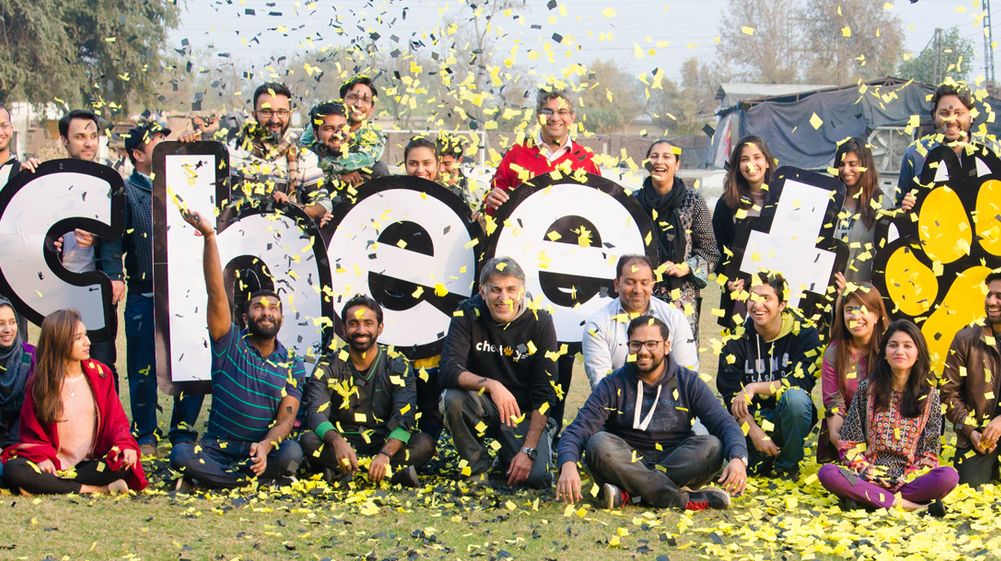Times have changed; and with them, so has the behavior of those buying and selling goods. If you look at recent trends, people across the world have changed their way of purchasing and supplying goods and services. Now you no longer have to go to the market every time you want to buy something.
E-commerce has become extremely popular in Pakistan lately, and most pundits agree that it will eventually take over the country’s digital economy like wildfire. The number of registered e-commerce merchants have increased 2.6 times, while e-commerce expenditures have blossomed by 2.3 times in a period of 12 months, says a recent report by the State Bank of Pakistan (SBP).
Recent advancements in the telecom sector have catapulted e-commerce to the next level. 3G and 4G services have meanwhile made it easier for the public to access these services. Pakistan has the highest rate of internet and mobile penetration in South Asia, with around 20 million Facebook users and 40 million internet subscribers. Other than technology, there are other factors that have aided the e-commerce growth spurt, including cash-on-delivery options, a wide variety of products, ease of buying, and customer feedback/reviews on social media.
These facts show a paradigm shift which has prompted vendors to use both their own websites and utilize online marketplaces to sell their goods. There is always space for augmentation and same is the case for Pakistan. Countries such as the United States, China, and India are all already on the bandwagon, while Pakistan has only just joined the party; but better late than never.
E-commerce sales in Pakistan in 2017 were US$622 million, 0.34 percent of the retail market, which is doubling every year. By 2020, this number is expected to hit US$1 billion. It is also predicted that Pakistan might become an emerging destination for B2C e-commerce. The number of transactions done in the e-commerce industry is also increasing at a rapid rate; however, the exact record is difficult to calculate because most of the buyers use the COD (Cash-on-Delivery) system. Transactions which are recorded are those done through credit and debit cards. As such, the still nascent e-commerce industry needs to be nourished in Pakistan.
There are millions of buyers in Pakistan who visit online stores every day to buy goods and services. In order to cater to those buyers more effectively and efficiently, Pakistani businesses are now embracing e-commerce. Many retailers, ranging from electronic equipment shops to clothing outlets, now use websites to sell their goods to their customers. The online marketplace is burgeoning, where websites like Cheetay.pk, Daraz.pk and OLX Pakistan have made things easier for retailers looking to sell their goods and services online.
There are plenty of key players who have worked hard to become market leaders, but several e-commerce platforms stand out. Cheetay.pk is a platform for e-commerce with the benefit of a logistics fleet for completion. They can deliver anything, and that too from everywhere, at any time. Their food delivery is on point with over four seventy five restaurants on their list. Cheetay.pk is a multi-category e-commerce platform that delivers food, healthcare, pharmaceutical, and cosmetic products across Lahore and very soon in Islamabad and Karachi as well.
Chengdu’s Consul General at the 9th South Asia-Sichuan Business Promotion Round-Table Conference encouraged companies in China to look into opportunities in the e-commerce industry of Pakistan and assist Pakistani e-commerce start-ups. China has the biggest e-commerce market with retail sales of approximately US$600bn recorded in the year 2018. So China’s help will surely boost Pakistan’s e-commerce market, which is young and where less than one-fifth of the population makes use of the internet.
The appetite for possessing new things never really perishes when it comes to the purchasing capacity of buyers. The general perception all over is that consumers are moving away from the traditional way of buying and are more comfortable in relying on digital for buying.
At the end of the day, a person with a cup of tea has real shopping potential.


























Ali Express cannot ship anything to Pakistan…. Any comments.
How can you say that? only mobiles are not sold to buyers in Pakistan via aliexpress